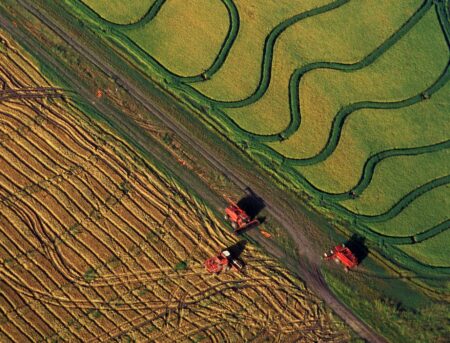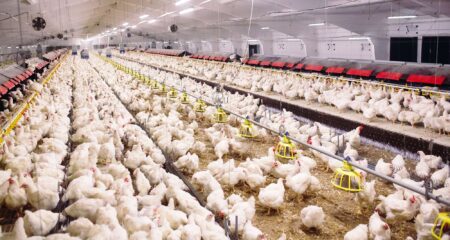According to the latest Crop Protection Network map, positive cases of tar spot have been reported in 19 Nebraska counties so far this year.
First reported in the Corn Belt in 2015, the disease has been confirmed in eastern portions of the state since 2021.
This season tar spot has also been confirmed in neighboring Iowa, Kansas, and Missouri. Wisconsin, Illinois, Indiana, Michigan, Pennsylvania, and New York have reported positive cases as well.
Weather
Frequent rainfall through June and July has favored disease development and spread of plant pathogens, explained a CropWatch article published by Tamra Jackson-Ziems, Extension plant pathologist at the University of Nebraska.
Iowa Environmental Mesonet
A map from the Iowa Environmental Mesonet shows some portions of the state have seen nearly 10 inches of rain more than normal between June 15 and July 15.
Syngenta agronomist Travis Gustafson said small pop up showers and thunderstorms have been common across the state to start the month of July. Coupled with the precipitation, overnight temperatures have been in the “sweet spot” for disease development, Gustafson said.
Looking ahead, he added, “Weather is just about perfect for pollination so we should see good kernel set as we progress through the month of July.”
What Should Farmers Do
Scout regularly, said Jackson-Ziems. “Tar spot will likely continue to develop in eastern Nebraska counties, especially in irrigated fields, albeit slower during hot, dry weather,” she said.
Tar spot is known for increasing more rapidly during the latter grain fill stages, Jackson-Ziems warned. “It’s likely that the distribution of the fungus and tar spot will continue to expand, both locally as the fungus increases in an area and especially to fields and counties further west.”
Multi-state fungicide research results show that applications made for tar spot management are most effective and economical when made between R2-R3, even when disease developed during early vegetative stages, said a June 20 CropWatch article.
Gustafson noted, “Many growers are putting fungicides in with insecticide they are already flying on.”
Jackson-Ziems recommends Nebraska farmers reach out to their local county Nebraska Extension team member or the University of Nebraska-Lincoln Plant and Pest Diagnostic Clinic if they need help identifying a disease before making a management decision.
The Crop Protection Network offers a Corn Fungicide ROI Calculator for farmers weighing a fungicide application. Access the calculator and read about the tool’s supporting research on their website.
Positive 2025 Cases
Crop Protection Network
- Butler County – 7/14
- Saline County – 7/7
- Jefferson County – 7/7
- Hamilton County – 6/30
- Nemaha County – 6/25
- Colfax County – 6/24
- Richardson County – 6/20
- Pawnee County – 6/20
- Johnson County – 6/20
- Otoe County – 6/20
- Lancaster County – 6/20
- Cass County – 6/20
- York County – 6/20
- Seward County – 6/17
- Polk County – 6/17
- Antelope County – 6/17
- Saunders County – 6/16
- Clay County – 6/16
- Pierce County – 6/16
Nebraska Corn Progress and Condition
USDA published the latest Crop Progress report July 14.
According to the report, 27% of Nebraska’s corn had reached the silking stage as of July 13. This is behind the five-year average of 32%. Last year at this time 45% of the state’s crop had reached the silking stage.
As of July 13, 5% of the state’s corn crop had reached the dough stage. This is ahead of the five-year average by 3 percentage points. Last year at this time 7% of Nebraska’s crop had reached the dough stage.
USDA rated Nebraska corn 1% very poor, 3% poor, 19% fair, 56% good, and 21% excellent.
That is better than the national average rating of 1% very poor, 4% poor, 21% fair, 57% good, and 17% excellent.


:max_bytes(150000):strip_icc()/IMG_7936-c12c642ad0064146a4aecfc1a60502a3.jpeg)
:max_bytes(150000):strip_icc()/HTTJohnDeeretractorwithtillage_preview-6e8cfa3643f043efb29085bd78d76c98.jpg)
:max_bytes(150000):strip_icc()/Canadian20flag48553671412_aeb0538794_c-0bfa123de2b54e30ab4fadecae382d4a.jpg)


:max_bytes(150000):strip_icc()/AGRONOMY_PHOTOS_2019_Corn_605-lowres-36b98d6ea1c146a1a50c05b0830154fe.jpg)


:max_bytes(150000):strip_icc()/WheatField-CloseUp-2000-bc79406da4004a2d94bcb2c32153cc3a.jpg)